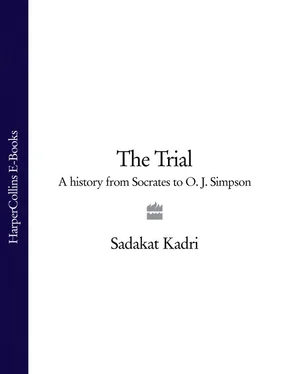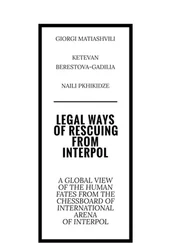1 ...7 8 9 11 12 13 ...34 The next several pages of the saga describe, with great delight, the mayhem that now ensues. Across the Law Rock weapons fly, bones crack, body parts are pierced, and at least one bystander is hurled headlong into his boiling cauldron. When the Law Speaker suggests to Snorri the Priest that they negotiate a cease-fire, he is speared through both calves and Snorri throws his monks into the fray. Lucky Kari himself, zipping through the mêlée like a wasp among bees, parries, pirouettes and slays with sublime assurance, even managing at one point to catch a spear in midflight and return it quivering into the body of its owner. The casualties mount until Flosi’s dishonourable lawyer is spotted by one of Kari’s companions. ‘There is Eyjolf Bolverksson,’ he roars. ‘Reward him for that bracelet.’ Snatching a spear from a friend, Kari does just that – and the blade that hurtles clean through the renowned pleader’s waist finally resolves the crisis. Each side withdraws in order to treat its injured and bury its dead, and those men still standing return to the Law Rock the following morning. ‘There have been harsh happenings here, in loss of life and lawsuits,’ observes one of Flosi’s team. The time has finally come to bury the hatchet, before matters get out of hand.
The trial is not typical of its era, in that defendants rather than prosecutors were usually the ones required to produce co-swearers, but the Saga of Burnt Njal is based on actual events and accurately depicts the hazards of litigation in late medieval Europe. Formalities were an entrenched aspect of legal procedure everywhere – so much so that a word out of place could cost the speaker a fine, the case or his life, until well into the fourteenth century. Across northern Europe it remained customary to attend one’s case fully armed until at least the late tenth century, each side ideally signalling compromise by clashing together weapons and shields (a ritual known as the weapon-touch or wapentake ), and Icelandic trials remained fraught with danger for considerably longer. Violence escalated well into the 1200s, with clubs giving way to small arsenals, until the country’s bishops were finally able to persuade enough litigants to leave their weapons at home for peace to take hold.
Compurgation, rough and ready though it was, was never entirely senseless. It could show a divided community where the balance of power lay. At a time when it was common knowledge that perjurers were liable to be frozen rigid, flipped backwards or reduced to dwarfish proportions, * it also encouraged honesty – even if confusion over whether witnesses were swearing to knowledge or belief meant that honesty was never a reliable guide to accuracy. But even in the depths of the Dark Ages, there were sufficient objections to the system that another form of trial process became pre-eminent. As might be expected of an irrational age, the alternative tapped even more deeply into the supernatural. Once a sufficiently large number of people had sworn to someone’s guilt, he or she might be subjected to an ordeal, typically using fire or water, at which God was invited to rescue the innocent by way of a miracle. If He did so, the person making the accusation would be punished. If He declined the opportunity, it was the accused who stood condemned – to banishment or death.
The procedures, unknown in the Bible, * probably rested on traditions of elemental worship that the Germans picked up directly or indirectly from India, but the Catholic Church took to them with gusto. As early as the sixth century, a distinguished bishop called Gregory of Tours was informing Christendom that trial by boiling water could be used to disclose God’s will. He told how a Catholic deacon and a heretical priest had agreed to settle their doctrinal differences by plucking a ring from a boiling cauldron, and how, moments before the test was due to begin, the Catholic was found to have smeared a magic balm onto his arm. As the honour of the True Church had teetered in the balance, a stranger from Ravenna had stepped from the crowd and plunged his own arm into the seething waters. The newcomer, whose name was Hyacinth, took some time – reportedly telling bystanders as he groped around that the water was a little chilly towards the bottom and pleasantly warm at the top – but within an hour he had the ring safely in his grasp. His rival then tried his luck, but had the flesh boiled off the bones up to his elbow. ‘And so’, Gregory gravely noted, ‘the dispute ended.’
By the ninth century, a similar ceremony was being used to resolve serious accusations in churches across Europe. While a fire burned in the vestibule, mass would be celebrated and the priest, clutching a Bible, would lead a line of cross-bearing and censer-swinging clerics towards the kettle. To the sound of psalms and the scent of myrrh, the water would then be blessed in the name of the Trinity, Resurrection, and Armageddon, and God would be implored to illuminate that which had been secret. Onlookers would meanwhile pray for the accused’s vindication or destruction according to taste, and he or she would then try to remove a stone from the bubbling waters. The resulting wound would be bandaged and three days later, the priest would remove the dressing and interpret the blister. If he declared it healed, all well and good. But if he pronounced it festering, guilt would be established, and exile or execution would be added to the woes of the accused.
The ordeal of fire switched elements but otherwise followed much the same pattern, requiring defendants to test their flesh against flame and then spend three days praying for a miracle, a merciful priest, or a combination of the two. Glowing iron bars were usually used, but during the eleventh century the mother of Edward the Confessor, Emma of Normandy, was reportedly made to walk barefoot over nine red-hot ploughshares in order to meet charges of an adulterous relationship with the Bishop of Winchester. (If Church chroniclers are to be believed, which of course they are not, she was so manifestly innocent that she had already strolled obliviously across the sizzling blades by the time she asked to begin.) A crusading peasant called Peter Bartholomew underwent an even more spectacular form of trial by fire in 1098. While wandering through the rubble of a ruined church in Syria, he identified an iron pole as the lance with which Jesus had been pierced on the cross. Although similar assertions would put countless others on the fast track to canonization, a faction of fellow soldiers alleged, for reasons unknown, that he was lying. If not, they contended, he would make good his claim by passing through two lines of blazing olive branches. He apparently jumped at the chance to prove his piety, pole in hand, but the story then becomes a little murky. According to Raymond of Agiles, a fierce supporter of Peter’s bona fides, he ambled between walls of flame that were a foot apart and forty feet high, pausing briefly only to converse with the Lord inside the inferno, before emerging unscathed – at which point a mob of admirers excitedly broke his spine. A second account was considerably more sceptical. A third condemned Peter as an out-and-out fraud. Charity, if nothing else, makes it more pleasant to accept Raymond’s recollection, but since even he noted that Peter died twelve days later (‘on the hour set by God’), it probably makes little difference either way.
Several other techniques were used to attract God’s attention. The ordeal of cold water involved immersing bound suspects in exorcized streams or wells, where priests would prod them with poles to see whether they sank or swam. On the strength of a theory that water was so pure that it repelled sin, anyone who floated was convicted; those who sank convincingly enough were vindicated and, with luck, resuscitated. Another type of ordeal, said to be especially popular among the Anglo-Saxons, was the trial by morsel, which required suspects to swear to their innocence and then swallow a piece of blessed bread and cheese without choking to death. It sounds like a procedure that would require a miracle to convict rather than to acquit, but no records survive to confirm or question its effectiveness. One incident from the eleventh century suggests, however, that there were at least some medievalists who regarded it as reliable. The tale concerns the Earl Godwin of Wessex, an eleventh-century maker and breaker of monarchs, who is said to have got up to no good in 1036 while playing host to one Prince Alfred, a young pretender to England’s hotly contested throne. Chroniclers record that Godwin began the evening pleasantly enough, entertaining Alfred at his castle and promising to support his claims, but ended it considerably less cordially by handing him over to his mortal rival, Harold Harefoot, whose henchmen extracted his eyeballs and let him bleed to death. Godwin soon gathered together the requisite number of cronies to swear to his innocence, but Edward the Confessor harboured a lurking doubt and took the opportunity at an Easter banquet seventeen years later to repeat the accusation of murder. Godwin seized a chunk of bread and raised it to the heavens. ‘May God cause this morsel to choke me,’ he bellowed, ‘if I am guilty in thought or deed.’ The chroniclers – none of whom, admittedly, had much time for Godwin – record that he chewed, trembled, and dropped dead.
Читать дальше




![Theresa Cheung - The Dream Dictionary from A to Z [Revised edition] - The Ultimate A–Z to Interpret the Secrets of Your Dreams](/books/692092/theresa-cheung-the-dream-dictionary-from-a-to-z-r-thumb.webp)







